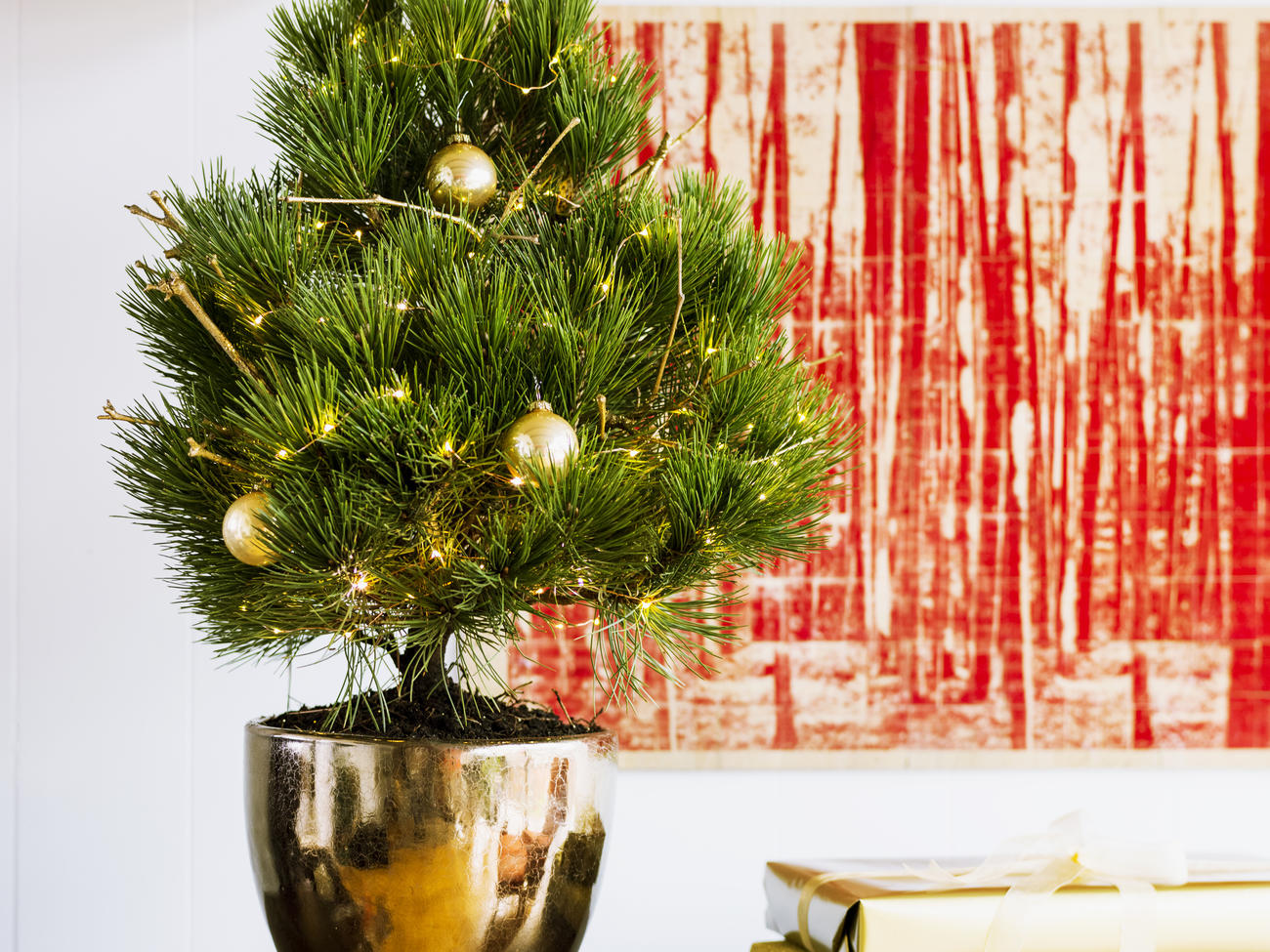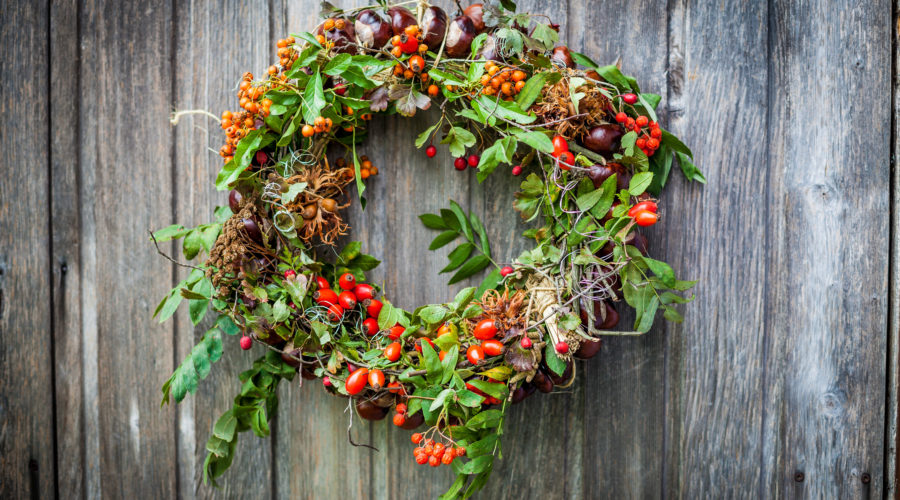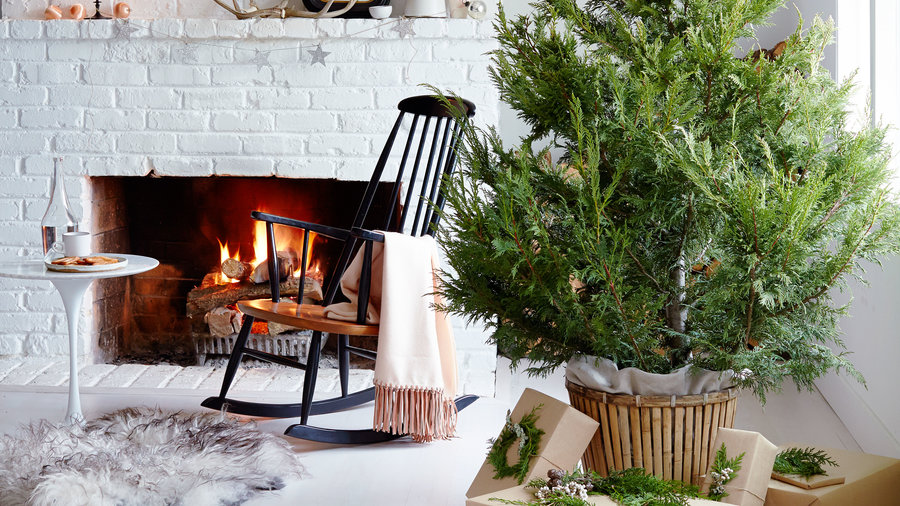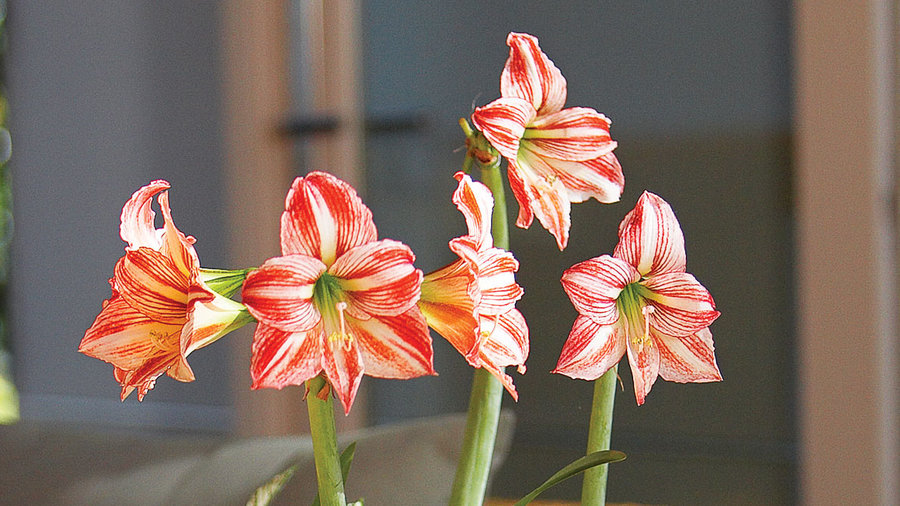
How to Care for Your Wreaths, Poinsettias, and More This Season
You’ve got enough think about this holiday season, the last thing you want to do is worry about your poinsettia plant or mini evergreen dying.

To help you pull off a beautiful space full of greenery and arrangements, garden lifestyle expert Carmen Johnston is sharing her best tips for caring for common Christmas plants and flowers. Whether you’re trying to get your wreath to last the whole season or gifting amaryllis bulbs to a friend, we’ve got you covered.
Poinsettia

Photo by OllgaP / Getty Images
The quintessential Christmas flower may be abundant during the holidays, but these plants do not like cold temperatures—Johnston warns against exposing them to temperatures below 40 degrees Fahrenheit. “When watering, be sure to remove the pot cover underneath, or anything that prevents draining,” she says. “Poinsettias do not like wet feet—meaning do not let them sit in water. They do drink a lot of water, though, and you may need to water them daily. Give them plenty of sunlight as they are a tropical plant and grown in the full sun—this will extend the bloom time.” Check the soil every day for dryness and display on a windowsill (if it’s not too chilly outside) or other well-lit area. Do keep in mind that poinsettias are toxic to cats and dogs. Though the toxicity rarely rises to a life-threatening level, pets may vomit or develop irritated skin if exposed to the plant’s sap, so you may consider discreetly re-gifting any poinsettias that come your way if you have pets.
Christmas Greenery

Photo by Peter Cebera / Eye Em via Getty Images
Think wreaths, garlands, mistletoe, and other greens that you’d display on your mantel or tabletop this time of year. “Before I make wreaths and garlands, I soak them in buckets of water overnight,” Johnston says. “This helps prevent them from getting crispy and gives you at least another week to enjoy.” When choosing greenery, select the freshest bunch, lightly mist the greens every couple of days, and keep them out of direct sunlight and heat.
Christmas Tree

Christmas trees, whether living or cut, dry out rapidly, which isn’t just unsightly—a dry tree is a fire hazard, too. Cut a few inches off the trunk of your farm tree as soon as you get it home. This will expose fresh wood, which will conduct water up the trunk better than sealed-up old wood will. Then keep your tree well hydrated. Check the stand multiple times a day to make sure there’s still standing water in it. (More tree-care tips here.) Living trees need plenty of liquid, too, of course, and they also need to have their indoor time monitored because they really aren’t made to take warm, cozy indoor temps for weeks on end. (More on that here.)
Pro tip: Always check your tree for stowaways. You just never know what you might find hiding in the branches.
Amaryllis

These red blooms make a festive addition to any holiday arrangement—and they make a great hostess gift idea, too. Plus, they’ll live for years with proper care. Johnston says that amaryllis bulbs prefer a pot rather than being planted in the ground. “Never let the bulb freeze,” she says. “If you are planting an amaryllis bulb, be sure to use good potting soil and allow the top third of the bulb to sit above the soil. Water no more than every three days or, sometimes, once a week.” You don’t need to keep them out in the sun, and once the blooms begin to fade, simply cut off the flower part so it can re-bloom.
